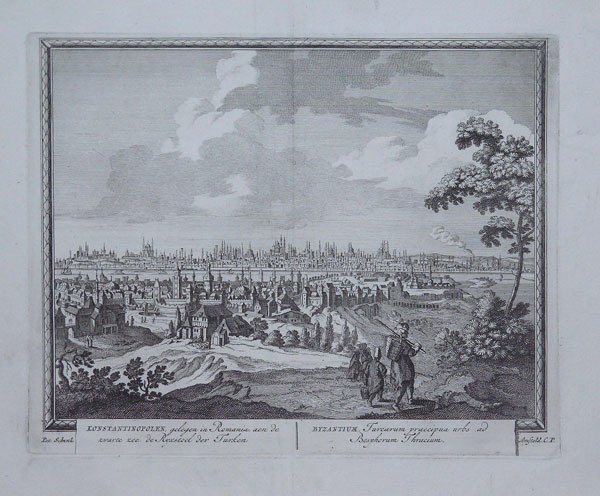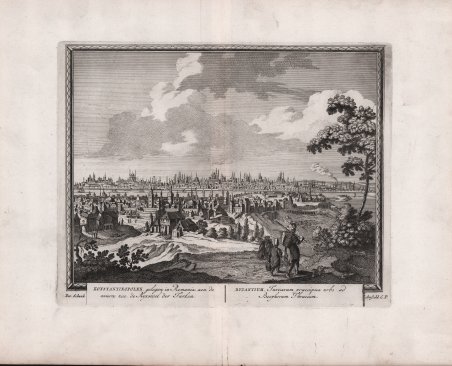Dettagli
Anno di pubblicazione
1702
Luogo di stampa
Amsterdam
Descrizione
Rara veduta della città tratta dal famoso atlante di città dello Schenk, denominato "Hecatompolis, sive Totius orbis Terrarum Oppida Nobiliora Centum; exquisite collecta atque eleganter depicta" stampato ad Amsterdam nel 1702. La veduta riconosce come fonte la produzione vedutistica francese coeva (Aveline, Chereau le Jeune, Carel Allard) che a sua volta si rifà al prototipo di Braun e Hegenberg; essa risulta tuttavia personalizzata da un'efficace ed accurata resa grafica, attribuibile alla mano esperta di un incisore dell'officina di Peter Schenk. In basso l'intitolazione è riportata in lingua olandese e latina e si legge il nome dell'editore. L'esemplare ha prodotto numerose filiazioni per tutto il Settecento ed oltre, per cui puó essere a sua volta considerato un prototipo. Peter Schenk (Elberfeld 1645 - 1715), fu un noto incisore e editore olandese, allievo di Gerard Valck ad Amsterdam, ne sposò la figlia e insieme a lui comprò molte lastre della ditta Blaeu nel 1683. Produsse vari atlanti e raccolte di piante e vedute di città, per le quali incise molte nuove carte: ai primi del Settecento fu nominato incisore di corte da Augusto di Sassonia, produsse infatti molti ritratti di personaggi famosi; molte incisioni uscite dalla sua stamperia, che nel frattempo si era notevolmente allargata ed ospitava i migliori incisori del tempo, portano la sua firma soltanto come editore. Alla sua morte l'attività fu continuata dal figlio Peter, detto il Giovane.Incisione in rame, in ottimo stato di conservazione. This is a rare view from Schenk's important town atlas, called "Hecatompolis, sive Totius orbis Terrarum Oppida Nobiliora Centum; exquisite collecta atque eleganter depicta". The veduta recognizes as a source the contemporary French production (Aveline, Chereau le Jeune, Carel Allard) which in turn is based on the prototype of Braun and Hegenberg; however, it is personalized by an effective and accurate graphic rendering, attributable to the expert hand of an engraver of Peter Schenk's workshop.Below the title is in Dutch and Latin and you can read the name of the publisher. The exemplar has produced numerous subsidiaries throughout the eighteenth century and beyond, so it can also be considered a prototype.Peter Schenk (Elberfeld 1645 - 1715), a well-known Dutch engraver and publisher, was a pupil of Gerard Valck in Amsterdam, married his daughter and together with him bought many slabs of the Blaeu company in 1683. He produced various atlases and collections of plants and city views, for which he engraved many new maps: at the beginning of the eighteenth century he was appointed court engraver by Augustus of Saxony, he produced many portraits of famous people, many engravings from his printing house, which in the meantime had expanded considerably and housed the best engravers of the time, bear his signature only as a publisher. At his death the activity was continued by his son Peter, called the Younger.Copperplate, good condition. Cfr.


Scopri come utilizzare
Scopri come utilizzare

